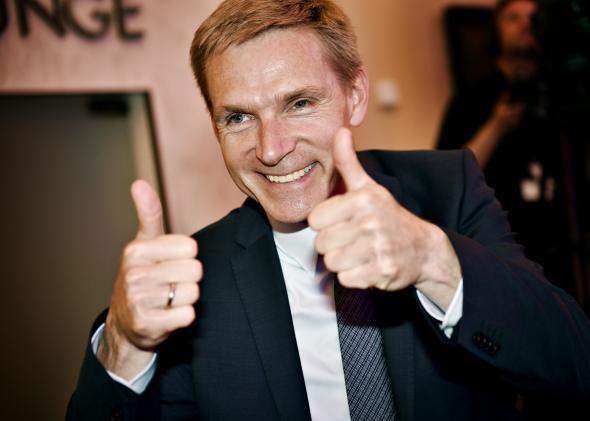Denmark, the small liberal Scandinavian country known for its welfare system and its (corresponding) happiness, took a sharp right Thursday night, as it voted out its current left-wing leadership in favor of a conservative multi-party government.
The right-wing Danish People’s Party (DPP) made the most significant electoral gains, capturing 21.1 percent of the vote, up from 12.3 percent in 2011. Denmark’s center-right Liberal-Conservative (Venstre) party came in third. The current leading party, the liberal Social Democrats, received the largest percentage of the votes (26.3 percent), yet failed to gain enough seats to form a coalition.
The head of the Social Democrats, Helle Thorning-Schmidt, came to power as the nation’s first female Prime Minister in 2011. Thorning-Schmidt stepped down Thursday night, both as the Prime Minister and as the leader of her party. (This is all familiar ground for fans of the TV series Borgen, which depicts the successful politicking and later defeat of Denmark’s fictional first female Prime Minister.) Now, liberal-Conservative leader Lars Løkke Rasmussen will lead the effort to form the new government and serve as the Prime Minister, a position he held from 2009 to 2011. Although his party’s title includes Liberal, its platform tends toward the right, advocating a free market economy and business deregulation. He will build the new coalition alongside other right-wing parties, though it might not include the DPP: despite that party’s overwhelming gains—and the fact that it came in ahead of the Liberal-Conservative Party—its politicians and its leader, Kristian Thulesen Dahl, are considering staying in the opposition, in hopes that they might be more effective at influencing policy.
Although Denmark is a small Scandinavian country, with a population of under 6 million, its changing political landscape could signal larger shifts to the right in Europe. Two of the main concerns in this election were the economy/welfare state and the question of immigration. The anti-immigration, Eurosceptic DPP ran on a platform that emphasized protecting Denmark’s borders by leaving the Schengen Agreement, which abolished border checks between 26 European countries, and making it harder for migrants to claim benefits from the welfare state.
As the New York Times reports, “the flow of immigrants ignited a backlash that has heightened nationalist sentiments, something that also unfolded with political upheaval in neighboring Finland — where the populist Finns Party joined the government — and to some extent in other European countries.” Already, Rasmussen’s government is seen as a boost to conservative UK Prime Minister David Cameron’s cause to renegotiate EU terms.
Denmark is still recovering from the two February shootings in Copenhagen, perpetrated by a young Danish man of Palestinian descent. The first occurred at an event for free speech featuring Lars Vilks, a Swedish artist who famously depicted the Prophet Mohammed. Within hours of the first assault, there was another shooting at a Copenhagen synagogue. The two attacks resulted in two deaths and five injuries. While the attack came only a month after the Charlie Hebdo shooting in Paris, many Danes offered a measured response that made certain to separate Islam from violence.* However, it’s very possible these events—a shock to the usually peaceful country—flamed anti-immigrant sentiment.
*Correction, June 19, 2015: This post originally misspelled the name of Charlie Hebdo.
